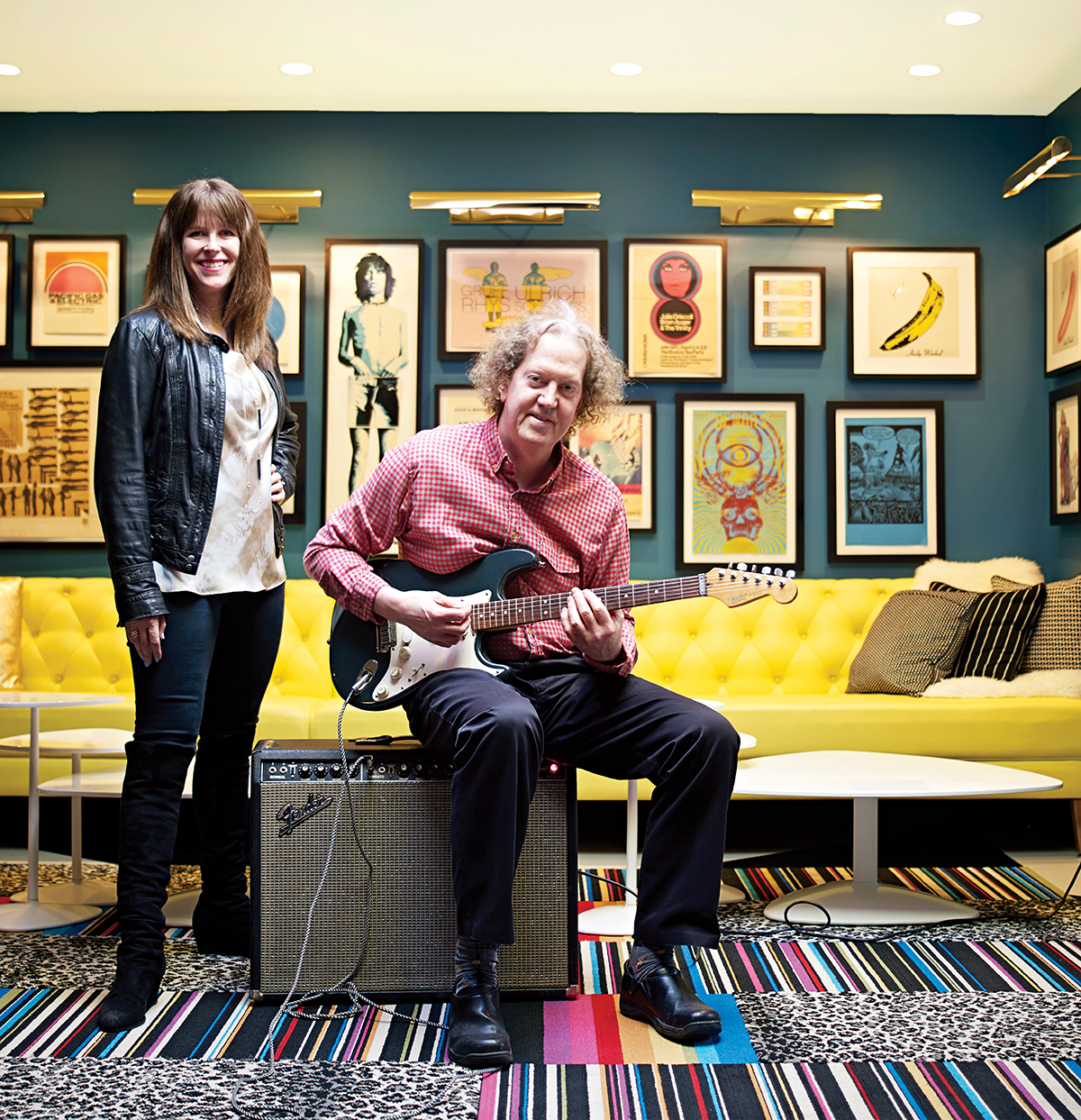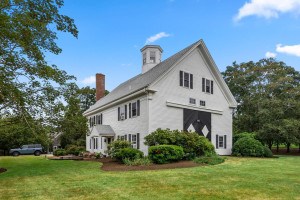Rocking the Resto World

Nancy and Tim Cushman in the Verb Hotel’s lobby. / Photograph by Christopher Churchill
Nancy and Tim Cushman have plenty of hidden talents up their sleeves. Between their impeccably designed dining projects and their under-the-radar musical bent (Tim went to Berklee and Nancy is a singer), they’ve got all the senses covered. When news hit last year that they were establishing an O Ya outpost in New York City and spearheading a new venture at the retro-chic Verb Hotel in the Fenway, Bostonians and New Yorkers finally had something mutual to celebrate. We caught up with the couple one Friday afternoon, just as they were returning from a weeklong jaunt to the Big Apple, to chat about what’s in store for them in Boston and beyond.
Tell us about your partnership with the Verb. How did you decide that a Japanese pub would work inside a rock ’n’ roll–themed hotel?
Nancy: We’ve had this concept in mind for probably the last five years. We’ve been looking for the right location to launch it and nothing was feeling right. And we have a lot of patience. The whole idea of the Verb is this very unique, and fun, and a little rebellious hotel, and it seemed like such a perfect opportunity to launch Hojoko.
Tim: A lot of people don’t know that rock ’n’ roll, heavy metal, and rap are a big part of Japanese culture. If you walk into the lobby at the Verb they have a guitar and an amp, and like Nancy said, it was kind of plug and play for us.
What can guests expect?
Tim: It’s meant to be an everyday izakaya—it’s not O Ya. It’s not the same price point as O Ya. It’s going to be a casual place and we’ll serve breakfast and dinner in some form.
There are rumors of karaoke.
Nancy: There’s a very good possibility of karaoke.
Yes! We hear that Nancy has a wonderful singing voice. Is it true that the two of you are in a band together?
Nancy: Yes. I laugh because it’s fun. We haven’t played an event for a couple of years now, but Tim practices guitar every day. That’s the other fun part about the Verb and Hojoko, we’re looking forward to having our band play at some point.
Tim: We’re thinking once a month or so we’ll do special appearances.
Nancy: But we’re going to focus on serving food and sake first.
So what goes into executing a restaurant—and its design—like this, from the initial dream to actually making it happen?
Tim: The whole thing is a gradual process. I started thinking about what would eventually become O Ya when I was living in Los Angeles in the ’80s. That was when I was first exposed to Japanese and Californian cuisines, and that combination stuck with me and became the inspiration for O Ya. It continued to develop over the years, and as I kept traveling and experiencing new food I kept adding to it.
The design style of the restaurant came from the beautiful buildings in Japan. When we were looking for a home for O Ya it wasn’t about the location, but more about the building itself. We were waiting for it to speak to us and say, This is where you belong. For two and a half years we were looking all over the country—not just in Boston—until we found the space in the old fire station.
How were you able to incorporate O Ya’s theme while still honoring the original space?
Tim: It happened quite naturally because there is a lot of natural wood and some brick in Japan, and our building had a lot of that already. We used cedar on some of the walls because it’s very common in Japan—we wanted it to feel like you were traveling in the Japanese countryside and you stopped at an inn with a tavern attached to it. We did shoji screens—windows that are lit up. A couple touches like that made it feel Japanese without overdoing it.
Nancy: We really love the old Kyoto style design and the use of natural materials like wood and stone. So we kind of married that with New England. We have a really interesting stone pathway leading to the huge wooden door, which was designed to look like that of the largest wooden temple in Japan. In Tokyo it’s crazy how neon and busy it is, and then when you go into these restaurants they have a way of transporting you to a serene place away from the city by walking you through a little garden or pathway. That was an important element we incorporated—making people feel like they were really escaping the world to have a relaxing experience.
How would you describe your personal design aesthetic in your own home?
Nancy: We like comfortable. Our main living areas are kind of California-inspired: light neutrals with pops of color. We have a Stefano Ferrara pizza oven in our backyard that we imported from Italy, and Tim’s brother and his friends built a bar around it. The interior is knotty pine and the bar is made from wood salvaged from an old New England factory.
What are your kitchen must-haves?
Tim: I did the whole opening menu for O Ya at home in my kitchen with simple equipment that everyone uses. The important things for me are that there’s room to move and good lighting. If you’re working with a lot of ingredients it’s important that things be organized and in their place. If you reach for the salt, you want it to be where it belongs. From a design standpoint: Keep it compact. I think the less movement you need to make, the better. You want enough room to move, but you don’t want to have to walk long distances to get things. Space efficiency is most important in home and restaurant kitchens.
Nancy: Lighting is a big one. We keep two windows behind the kitchen line so the chefs can still feel like they’re part of the life of the city.
Tim: It’s a long day for everyone, and if it’s snowing I want people to look out and for a brief moment have a mental break and say, Oh it’s beautiful, and maybe not feel so isolated.
What’s it like being in multiple cities?
Nancy: Fun! We’re all about our team—in both cities the folks we have on board are amazing. What’s really fun about New York is that people who worked with us five or six years ago while they were in college now live in New York and have rejoined us. So we keep saying the band is getting back together. It’s like a family.
Speaking of teams, you’re not going to start rooting for the Yankees now, are you?
Tim: No! We’re Red Sox fans.
Nancy: We know where our home is.


